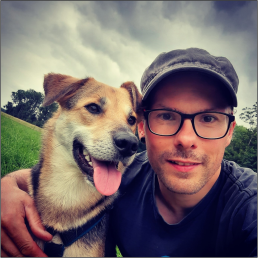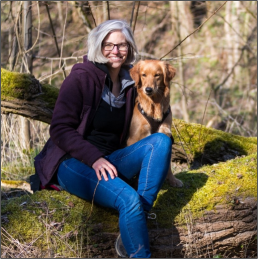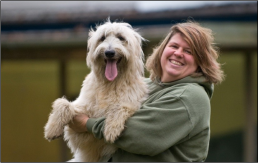UfU Information | Issue 4 – December 2021 | Department of Nature Conservation & Environmental Communication
Project IGAMon Dog – Dogs looking for plants
The first steps have been taken
Monitoring – recording species
There are already a large number of methods for recording animal and plant species that are adapted to the target species. For example, bark beetles are attracted with pheromone traps, birds and frogs are detected by their voice and mammals are often detected using camera traps or even drone footage. Unfortunately, one method that many animals use as a matter of course is largely denied to us humans: recognizing animal and plant species by smell. Here we can count on the support of our best friend. Ever since dogs have existed, we have been using their sense of smell for avalanche rescue, in the police force or for hunting. So it seems obvious to use them for nature conservation.
Species detection dogs – a “relatively” new phenomenon
Using dogs for nature conservation is a new method and has not yet become widespread. There are some great examples of this: In Australia, for example, species detection dogs are successfully used to find endangered koalas during forest fires. And in Germany, successful species detection dogs are now in use, for example in the search for otters, newts and the Asian longhorned beetle. The association Wildlife Detection Dogs e.V. (WDD) in particular is committed to the networking of detection dog handlers and the standardized training of species detection dogs.
IGAMon-Dog – The project
Searching with the nose is in the dogs’ blood. A dog can have around 300 million olfactory sensory cells, about 30 times more than a human. Together with the WDD and the Helmholtz Center for Environmental Research, the idea has now emerged to use the dogs to search for invasive neophytes. UfU has specialized in this field for many years and has successfully carried out several projects to monitor invasive species. Invasive neophytes are plant species that spread in foreign habitats and compete with native species for habitat. In order to protect native nature, it is important to control these species, as otherwise sensitive ecosystems can be disturbed.
The special thing about this pilot project is that UfU uses simple family dogs and their owners for this search. The dog-human teams are to be trained together and then, for example, assist scientists on walks in their free time by tracking down plant species.
The dog training
Training to become a species detection dog is time-consuming and demanding. The dogs must learn to always indicate the target species, but also that sometimes very similar other species are of no interest to humans. Because: identifying plants with their nose is not difficult for our dogs, they do it all the time. The difficulty lies much more in making the dog understand that it should tell us that it has found a very specific species. A lot of patience is required for this work. It is therefore particularly important that the dogs are highly motivated by toys and food and enjoy working with humans. But it is also very demanding on people. However, time-consuming training and having fun analyzing and constantly improving training sessions ultimately lead to the goal.
In the IGAMon-Dog project, we have already selected 15 participants who are now undergoing training with their dogs to become species detection dogs. Our citizen scientists are a motley crew from 6 different federal states and with dogs of many breeds and ages. Identification is currently being practiced.
From spring 2022, our IGAMon dogs will then support the KORINA project in monitoring balsam, Japanese knotweed, Sakhalin knotweed and mugwort ragweed.
Clemens von Wolffersdorff with mixed-breed dog Nora, Saxony:
“What makes the project special for me is the professional support from the dog trainers and the entire UfU/UFZ organization team. The forum set up especially for this purpose offers us the opportunity to exchange ideas in an uncomplicated way. As a result, we not only learn from each other, but also with each other and the individual training becomes collective training.”
Clemens and his dog Nora

Nina Gandl with retriever mix dog Maia, Brandenburg:
“I was delighted to have the opportunity to take part in IGAMon-Dog. In addition to my day-to-day work at WWF, the project gives me the opportunity to get out into nature and get involved in species and nature conservation. I particularly enjoy the mix of theory and practice, the webinars by extremely experienced and professional dog trainers and the exchange of experiences with the other teams. But the greatest thing for me is of course the daily collaboration with my dog Maia, which brings us even closer together. Let’s see what invasive species my little sniffer out there can track down!”
Nina and her dog Maja

Katja Krauss, dog trainer:
“I am delighted to be part of the IGAMon community and to train the dog-handler teams together. It’s great that this project is making the search for plants with dogs better known. After a lot of attention has already been paid to the search for animal species in recent years, the interested public is now learning that dogs are also able to help combat invasive plant species.”
Dog trainer Katja



